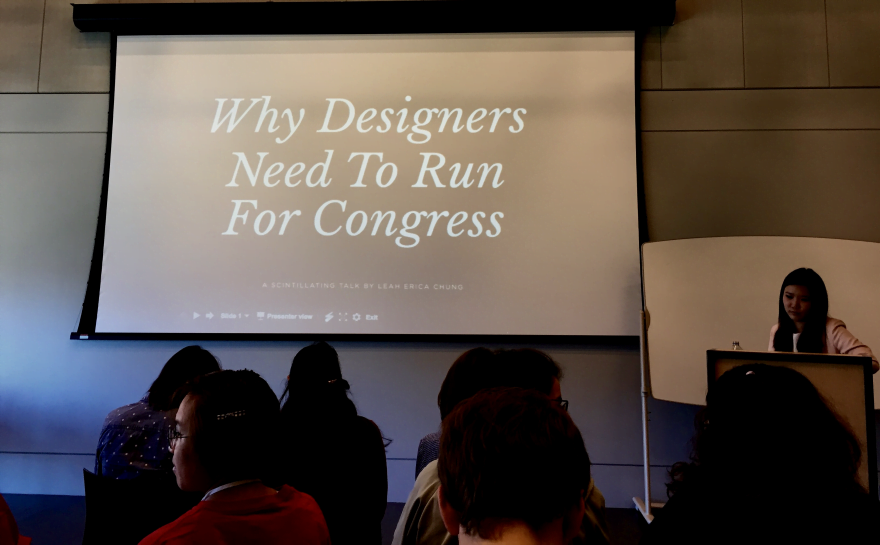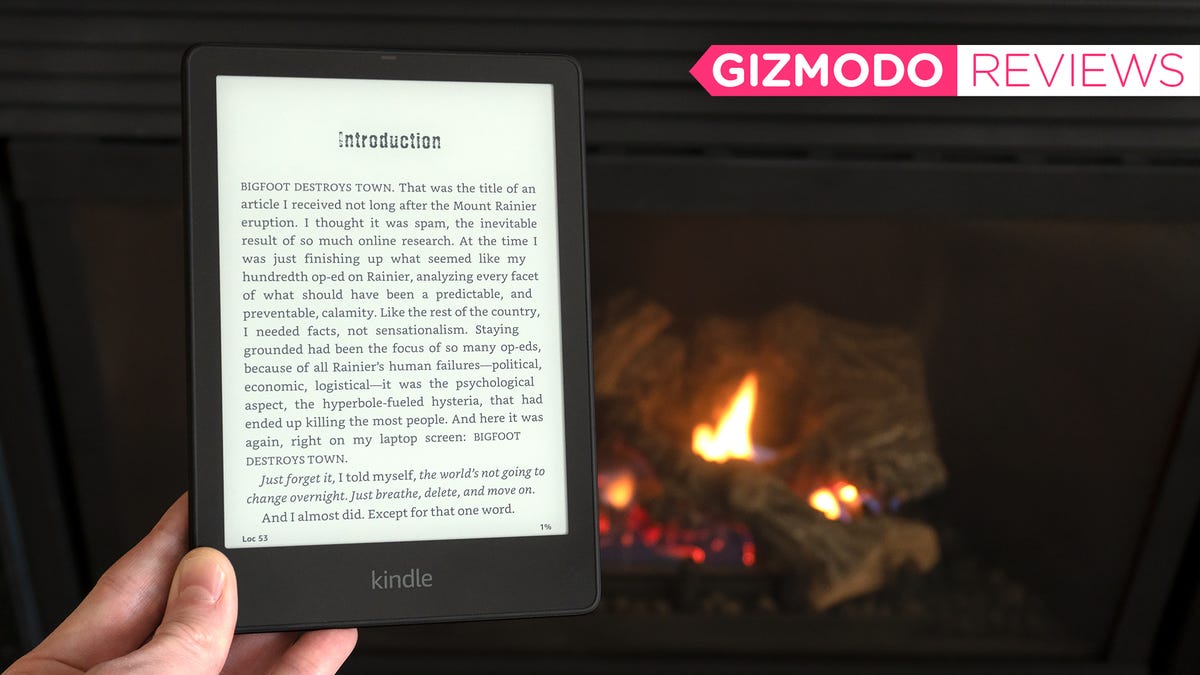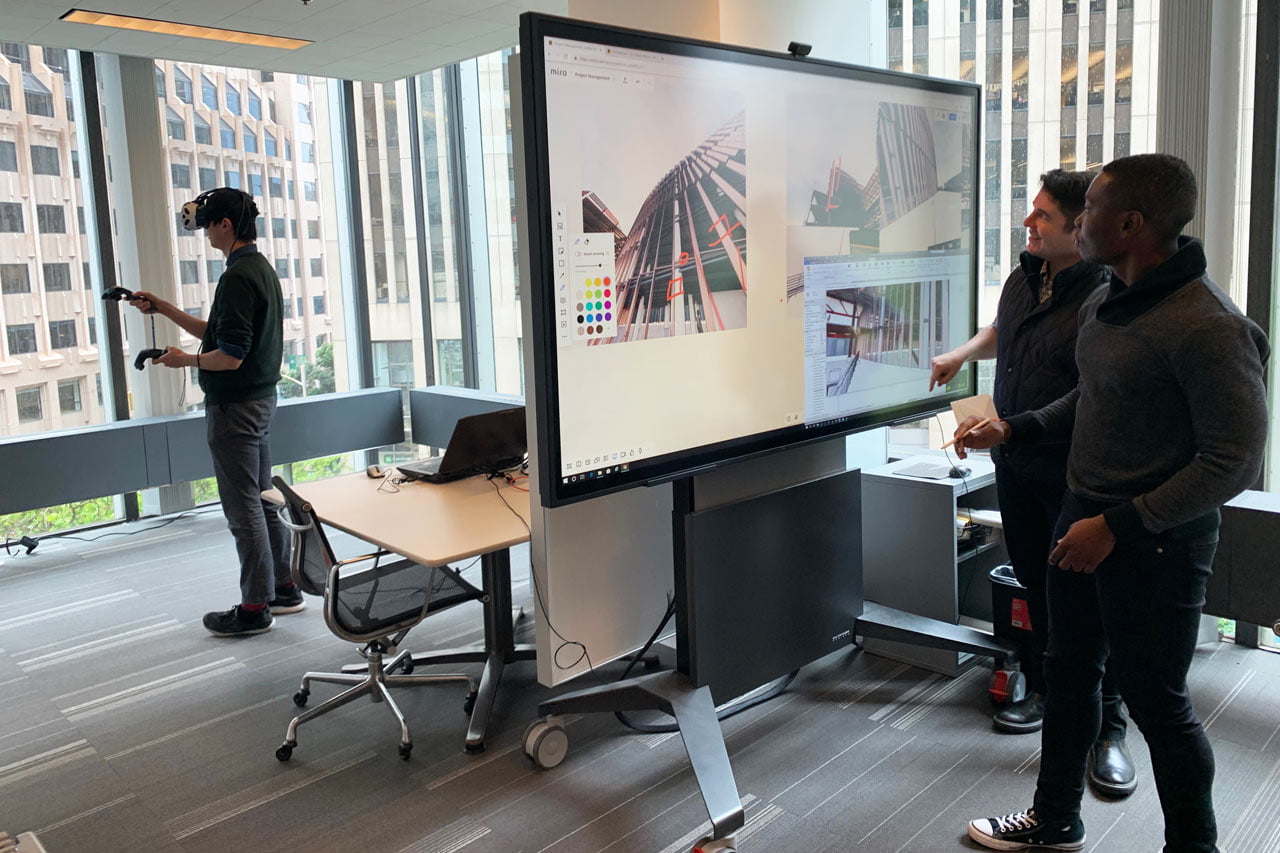
<p “my=”” hope=”” and=”” dream=”” is=”” to=”” see=”” designers=”” in=”” positions=”” of=”” power=”” so=”” that=”” the=”” laws=”” policies=”” govern=”” society=”” are=”” people=”” centered=”” actually=”” make=”” sense=”” real=”” life.=”” imagine=”” for=”” example=”” if=”” a=”” congressman=”” or=”” woman=”” did=”” some=”” expansive=”” user=”” research=”” gather=”” relevant=”” information=”” from=”” end=”” users=”” before=”” drafting=”” their=”” laws.”=”” id=”c6ee56_2949″ data-ic-marker=”3491a7_1320″>A design conference seems like an unusual place to deeply examine politics, but no event held on a college campus would be complete without deep examination of American politics this year. Public policy was a hot topic at 2016’s Better World by Design, during which several presenters examined designers’ roles in politics and policy making.
 Enter a caption (optional)
Enter a caption (optional)In her presentation “Why Designers Need to Run for Congress,” RISD graduate (ID ’14) Leah Chung of US AID spoke to attendees about how to be design evangelists and her path to international relations in US government. While Chung was thankful for the skills and opportunities RISD’s studio courses presented, she was drawn to international relations courses at Brown University and spent an entire semester at Georgetown University in order to gain deeper understanding of the complex global issues to which she wanted to apply her design skills.
“My hope and dream is to see designers in positions of power so that the laws and policies that govern society are people centered and actually make sense in real life. Imagine for example if a congressman or woman did some expansive user research to gather relevant user information from the end users before drafting their laws.”

Eventually, Chung found her career with US AID. Through the organization, she was able to apply open critique culture to meetings and translate idealistic jargon into something concrete and grounded in reality. In asking, “How are we going to solve age-old issues with the same types of thinkers, trained in the same kinds of institutions present year after year?” Chung makes a compelling case for designers invading traditional, broken political structures: designers are trained to listen, respond critically, reframe problems and communicate complex ideas in simple ways.
“If it’s the job of politicians and public servants to empathize with the stories of ordinary citizens, to understand their needs and respond to them with tangible solutions, I really can’t think of a better group than designers for the job.”

Getting directly involved in the dredges of federal government isn’t for everyone. Co-director of Center for Civic Design Dana Chisnell uses design skills to address issues in the voting system on local levels. Chisnell reframes data to make information and interfaces more accessible. In her presentation “Anywhere Ballot, The Future of Universal Access in Voting,” Chisnell presented a variety of ways to use products as a vehicle for voter engagement. The Center’s Field Guides for Ensuring Voter Intent, funded through Kickstarter, take the form of eleven pocket-sized booklets. Inspired by the U.S. Election Assistance Commission’s report “Effective Designs for the Administration of Federal Elections,” which featured AIGA Design For Democracy’s work, Center for Civic Design recognized that the mass of information needed to be simplified and communicated in a way that local election officials could easily understand and enact within particular political constraints.
 The Center for Civic Design’s Field Guides for Ensuring Voter Intent establish election material standards
The Center for Civic Design’s Field Guides for Ensuring Voter Intent establish election material standardsFrom Designing Usable Ballots to Guiding Voters through the Polling Place, each booklet addresses a particular breakdown in the US voting system on a local level, that effects change on a national level—from micro to macro. In addition to the Center for Civic Design’s field guides, the team designed Anywhere Ballot, a project that addresses the question: how might we make elections accessible to all voters? The prototype applies principles from the organization’s field guides to a digital interface accessible from each users’ own individual device.
 The Anywhere Ballot’s customizable and clear format makes voting simple.
The Anywhere Ballot’s customizable and clear format makes voting simple. While it may seem futuristic, the design eliminates the need for separate voting systems, especially for those who do or do not have disabilities, allowing voters to utilize the customized technology that already know and own. While this system will not be available for the current 2016 presidential race, the Center for Civic Design believes it is likely that election jurisdictions will embrace this incorporation of consumer, off-the-shelf technology into the voter-facing part of the election system within the next ten years.
[Source:-cORE 77]





